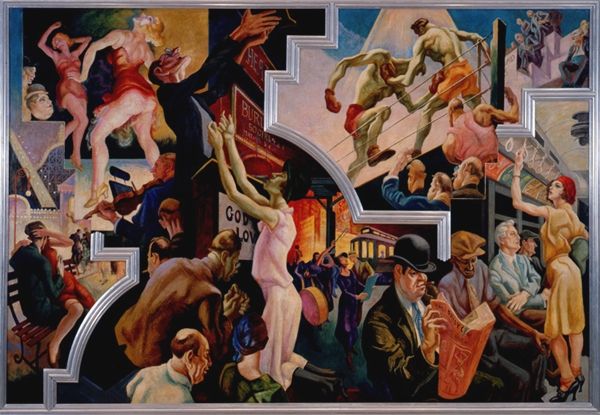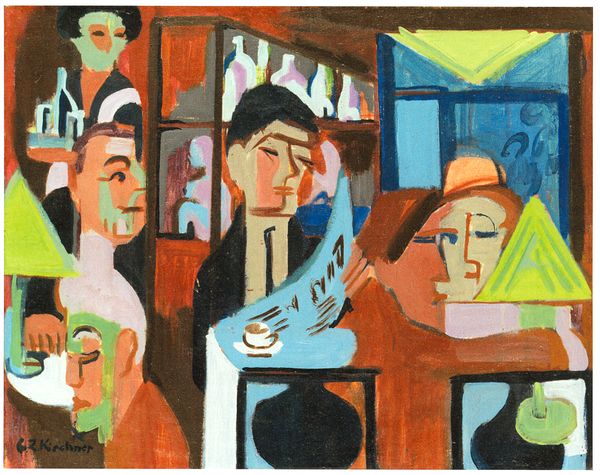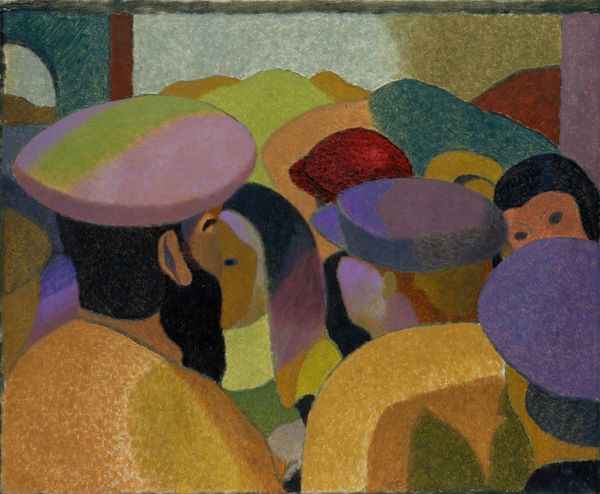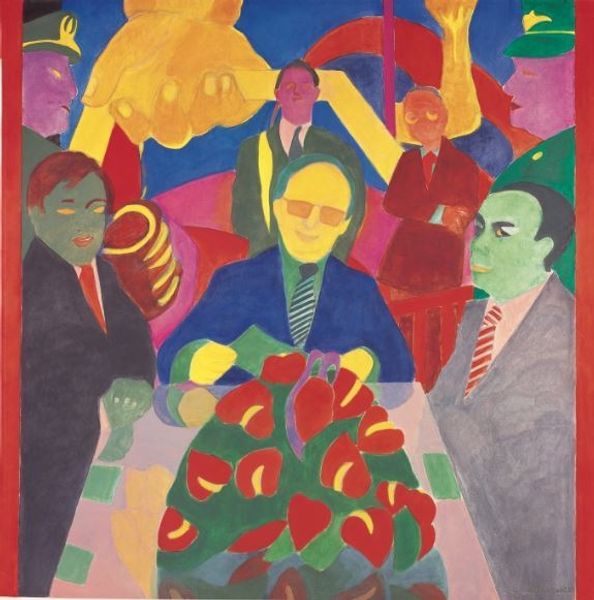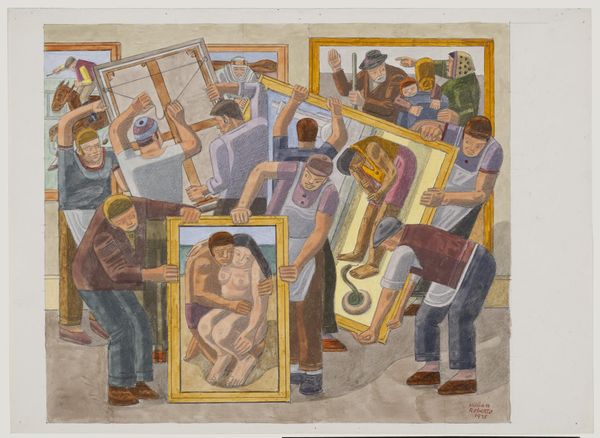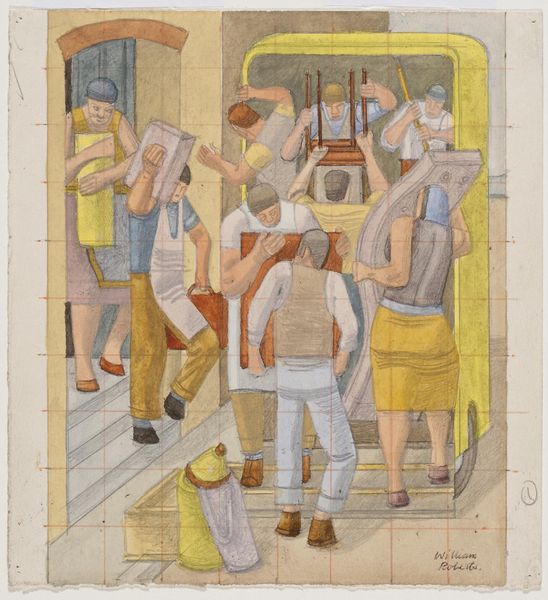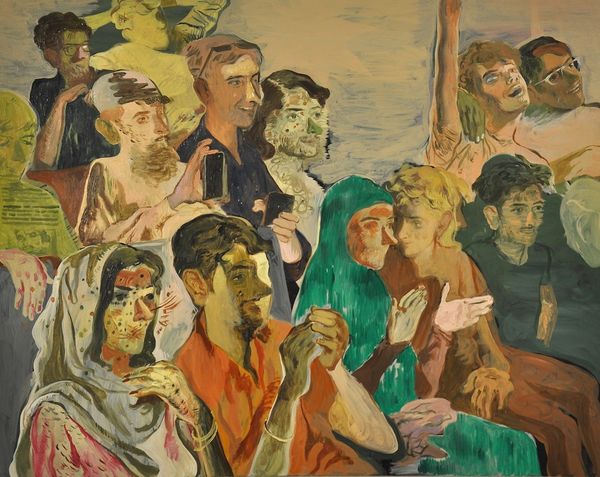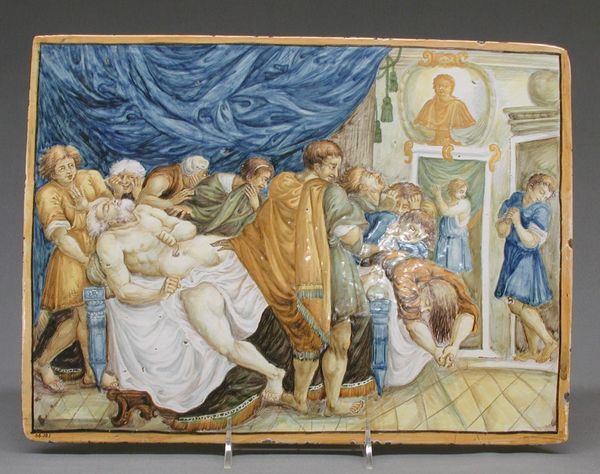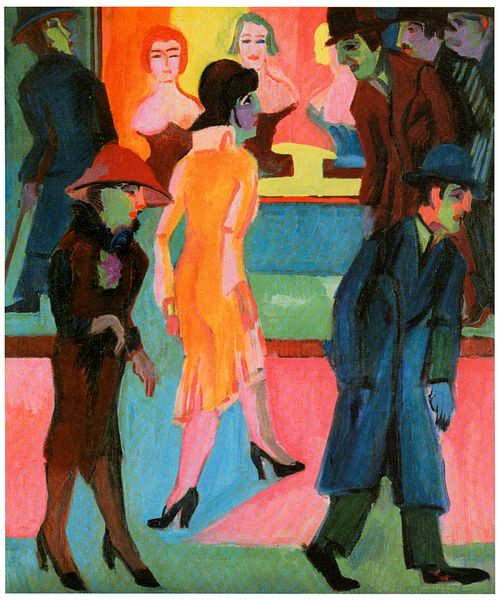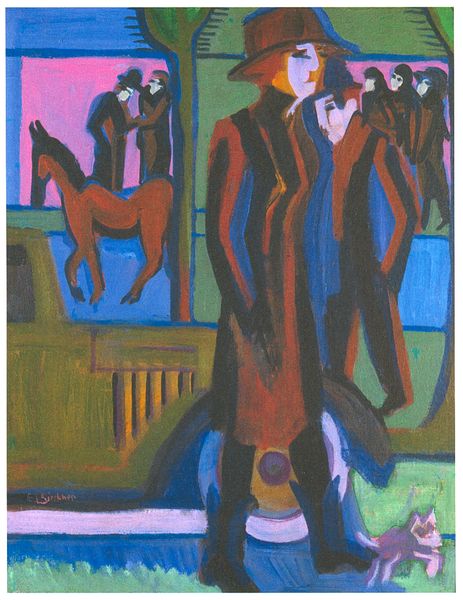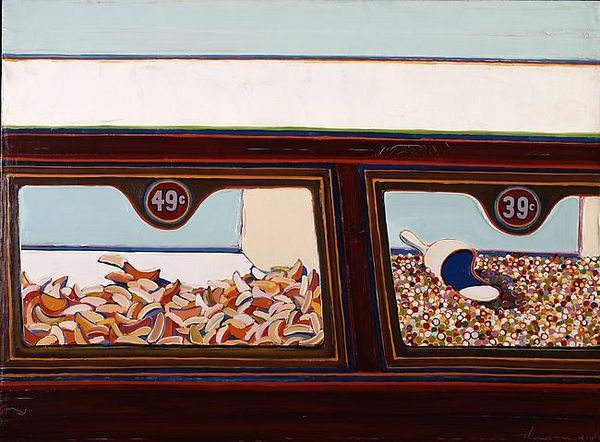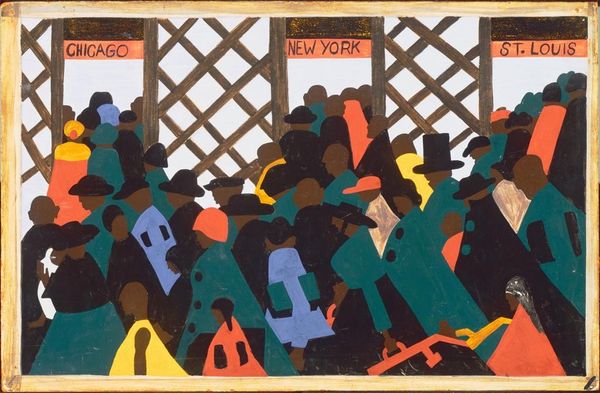
painting, acrylic-paint
#
painting
#
acrylic-paint
#
figuration
#
genre-painting
#
modernism
Copyright: Grégoire Michonze,Fair Use
Editor: Here we have Grégoire Michonze’s painting, "Figures," from 1967. It’s an acrylic painting, depicting figures in what appear to be two distinct settings. The style feels very modern. I find it almost…theatrical. What do you see in this piece? Curator: Well, beyond the immediate visual impression, it invites us to consider the context of its creation. Michonze painted this after enduring the Holocaust and migrating to another country, correct? Editor: Yes, he moved to France from Bessarabia. Curator: Then how does this sense of displacement, of bearing witness to unimaginable atrocities, influence the ways we view the people depicted? Are these figures portraits, or perhaps representations of broader social groups? Editor: I hadn't really considered that. The two distinct settings you mentioned seem almost segregated, but perhaps it is just two slices of the same life. Curator: Precisely. We need to ask, how does Michonze use this division and, indeed, his modernist style to represent potentially fractured communities in the aftermath of significant trauma? Are there codes or visual keys he uses? Consider the power dynamics that might be subtly portrayed. Is there someone dominating, excluded, or threatened in each segment? Editor: So, rather than simply observing, we must also think about these figures as holding social positions, and all the issues that come with those positions. Curator: Absolutely! By connecting his personal story with larger societal themes, Michonze encourages us to not just see, but truly *read* the painting, looking for layers of meaning. How does this context change your initial reaction? Editor: It moves the viewing experience beyond aesthetics. It asks the viewer to consider these figures' personal and societal identities through this painting. It’s much more intricate than I first assumed. Curator: Exactly. It reminds us of the artist's lived experience of trauma but how identity politics can affect us all even today.
Comments
No comments
Be the first to comment and join the conversation on the ultimate creative platform.
